As John and I entered the VA Clinic in Pensacola on Thursday, 25 March 2021, at 9 a.m., I was filled with optimism about his visit with Dr. Gregory Meakin, M.D. He is an Ear, Nose, and Throat Specialist, also known as “The Diving Doctor.” He was actually well acquainted with Roy, my late husband, and I had met Dr. Meakin several years before when Roy and I attended a couple of his seminars in Gulfport, MS where he presented information about a number of topics primarily involving medical issues and diving. When John had difficulty clearing his ears on our first and only dive trip (so far) at St. Andrews State Park and then on a boat dive in the Gulf outside of Panama City Beach last year, I immediately thought of Dr. Meakin. We were hopeful he could figure out what was wrong and fix it.
I have never been to the VA Clinic, but thankfully, John knew his way around, and boy, does he walk fast! I used to think I did. Maybe I’m slowing down in my old age.
Once he was checked in, he was called back within a minute or two by a med-tech, and I was allowed to go with him into the exam room. The med-tech got John situated in the exam chair, and I took a seat next to the door. A few minutes later, Dr. Meakin came in and introduced himself to John and to myself, and they began to discuss what had happened during the dives last summer.
My brain was a little fuzzier than usual, so I can’t recall exactly how the conversation led to me mentioning Roy to Dr. Meakin, explaining who I was, and how I had a bit of a challenge tracking him down, but he remembered Roy with fondness. He told me he had run into a former student of Roy’s recently who thought he was still teaching diving.
“I told him he had passed away, but I can’t remember when it was exactly,” he said.
“It was March 4th of 2019, just over two years ago.”
He expressed his sincere condolences, and though his mask hid his expression, I could see the sympathy in his eyes as he paused for a brief moment, and then turned back to continue his discussion with John.

As he did, their voices trailed off into an inaudible buzz as my mind was suddenly back in the Gulf of Mexico on the Island Diver. We were floating on flat seas over some wreck or bridge span, the anchor line already tied off by Fred, our dive master, the water so clear and blue you could almost see where the line was tied off on the edge of the dark shadow of the structure below.
“Pool’s open!” Fred shouted, as he and the deck hand began to usher divers who were suited up and ready to go to one of two step-off points on the boat. I made one more check of my gear, turned the handle on my Nitrox tank to open, freed it from the bungee cords securing it, then sat down and wriggled my way into my BC. I snapped the straps together across my chest, cinched the wide Velcro belt around my waist, and prayed I wouldn’t tip over as I leaned to retrieve my fins from under my seat. My excitement was palpable as I hoisted myself with the heavy tank on my back and carried my fins to the opening in the rail where the dive master waited.
“Yum-yum yellow,” he quipped about my fins, “the color sharks prefer, you know.”
“Rigghht,” I smiled, as I handed him my fins, positioned my mask on my face, and placed my regulator second stage into my mouth. I held onto the side rails as I bent my right knee behind me so Fred could slip my fin on my booted foot, give it a slap when it was secure, and repeat the process for the other foot. With a final check of my air, I signaled that I was ready, looked straight ahead at the horizon, and placed my left hand over my mask with my fingertips curled over the top and the palm of my hand pressing gently on my regulator to prevent the force of the water from pushing them off of my face when I slipped into the water. With my right foot, I took a “giant stride,” as though stepping over something in front of me, and dropped several feet straight down into the warm water of the Gulf.
It’s almost impossible to describe what it’s like. I will never forget the first time, and it has always been just as magical and awe-inspiring every time since. It’s like floating in a warm liquid sky. The water forms a layer in your wetsuit that keeps you warm as you pull yourself along the anchor line to the wreck below. All around you as far as your eyes can see is a beautiful, deep blue. Like the sky, it seems endless except where it meets the earth below. For me, the experience reminds me how infinitesimal I am in the great scheme of things. There are creatures in the ocean that are giants compared to me, and they live in a seemingly infinite world that is far greater in length and breadth than even they are. More than 80% of our oceans remain unexplored. Think of it! We are so often transfixed by outer space and almost obsessive in our desire to explore it while a vast universe of water filled with unimaginable wonders lies beneath us.
“Would you like to see what it looks like as I place the camera up your nose?”
Dr. Meakin’s voice suddenly yanked me out of the Gulf of Mexico and back to my chair in the exam room.
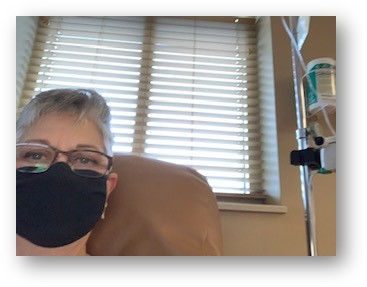
I hadn’t yet written about this very important part of my life: scuba diving. As I relax in a recliner at the infusion suite while the Darzalex slowly drips into my IV, I’m going to write about this wondrous pursuit that I love and hope that I can convey it in a way that might tempt the faint-hearted to come visit me on the Gulf Coast and take an “Introduction to Scuba Diving” course.
The onset of the pandemic crisis provided the first challenge to my opportunities to go diving, and now, this insidious cancer presents other obstacles. I could probably work around them to a degree, but it takes energy that my body simply isn’t generating right now. Until last Thursday, I had managed to keep the thoughts of diving at bay, but accompanying John to his ENT visit brought them sweeping back into my brain like the wind that whipped our car as we drove across the Escambia Bay Bridge that morning.

As I mentioned, our visit to the VA Clinic in Pensacola was prompted by the first and only diving trip John and I have made together so far. It was last July when we went to Panama City to dive at the jetties at St. Andrews State Park followed by boat dives in the Gulf on the next day along with a group of students who were there to get their Open Water Diver certifications. My dear friend, Wade Howk, had stepped into the role that my late husband formerly held as their instructor with a sporting goods store in Gulfport called Sports Unlimited. Wade and his late wife, Kathy, who he lost to cancer in 2017, were also former students of Roy’s. The owner of the store, Tony Deas and his wife Patti were also there.
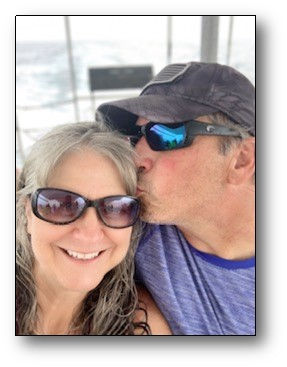
It has been probably 20 years or more since John became a certified diver and had actually gone on a dive. He was concerned about being able to clear his ears, a problem he had dealt with initially and that unfortunately recurred on this trip making it difficult for him to descend to depth.
The jetties at St. Andrews has always been one of my favorite diving destinations, but diving there when the water is clear is tricky. As I recall, the visibility on that trip was pretty good, probably 20-30 feet at depth. I consider that to be a shallow dive at 30 feet or so, although I would routinely explore to depths nearly twice that when I could. When a student or another diver asked Roy about the visibility, he would often answer, “It’s as far as the eye can see!” And of course, it always was.
I had been diving at the jetties over the summers for 12 years, nearly every time Roy had a class of students to certify. I would coordinate my working weekends and schedule my PTO so that I could accompany him on every dive possible. The accommodations for divers, beach-goers, and tourists included covered pavilions with picnic tables and barbecue grills on cement slabs with ample room for dive gear, tanks, and coolers filled with water, soda, beer, and snacks. There is a pad with showers to rinse off the salt water and sand after your time on the beach or in the water as well as a nicely equipped facility nearby where you can change out of your gear or swimsuit, shower, and get dressed in dry clothes, then peruse the gift shop for souvenirs and snacks. I love St. Andrews and have many wonderful memories of my trips there.


Back on 9 October 2018, Hurricane Michael roared in from the Gulf of Mexico as a Category 5 hurricane and made landfall at Mexico Beach as the most powerful storm to impact the Florida Panhandle in recorded history. (2) The scale of the devastation in Mexico City, Port St. Joe, as well as Panama City and other cities in its path was unfathomable. It wasn’t until three months later in January 2019 that Roy and I made the 75-mile drive from Navarre to Panama City Beach to see what was left of our beloved St. Andrews Park. It was a stark and sobering experience.
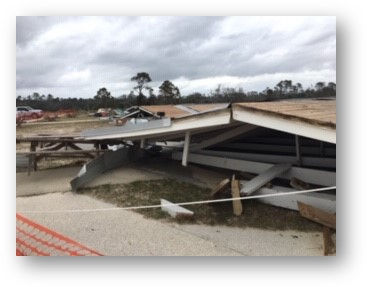
All but one of the roofs over the pavilions had collapsed like pancakes onto the cement slabs. More than one was completely gone. The sky was menacing with dark clouds that hovered over us and seemed to reflect our feelings of dismay from the bleak scene of destruction that lay before us. Would the pavilions be repaired in time for the first certification dives in the spring?
But fate had other plans for us that spring. I couldn’t know as I stood there, dumbstruck by what I saw, that the devastation from the hurricane would fade from my thoughts faster than the vapor from your breath on a cold window in the winter. Roy would be gone before the Gulf waters would be warm enough to dive again, taken from me and from his daughters and from the multitudes of grateful and admiring students he had introduced to the world that lay beneath the deep blue of the ocean that he loved so much.
The possibility of a recurrence of his cancer, though locked away like a terrible contagion in a vault in the recesses of my brain, was an ever-present squatter. Not long before our visit to St. Andrews Park that January, Roy had complained of pain in his back, but he was stubborn about going to the doctor. Under pressure from his daughters and me, he finally relented, and we soon learned that the pain he felt was the result of metastases of the signet ring cell carcinoma, more commonly known as a form of stomach cancer, that he had overcome 18 years before. This time, it was inoperable and the doctors’ prognosis was grim – six months at the most. In actuality, we had less than half that.

I couldn’t imagine diving without him. On the other hand, I couldn’t imagine never diving again. I went a few times that summer, including in August, his birth month, where I held a memorial dive in his honor with the dive shop, Scuba Shack, that he had used for many years in Pensacola to conduct his open water certification dives. Two of his daughters, one stepson, my sons, and dozens of his former students participated in the dives and shared in the short ceremony where I scattered Roy’s ashes in the calm waters of the Gulf outside of Pensacola on that sunny day. The presence of so many who loved and admired Roy made the dive so very meaningful and eased the pain of his loss, at least for a few brief hours.
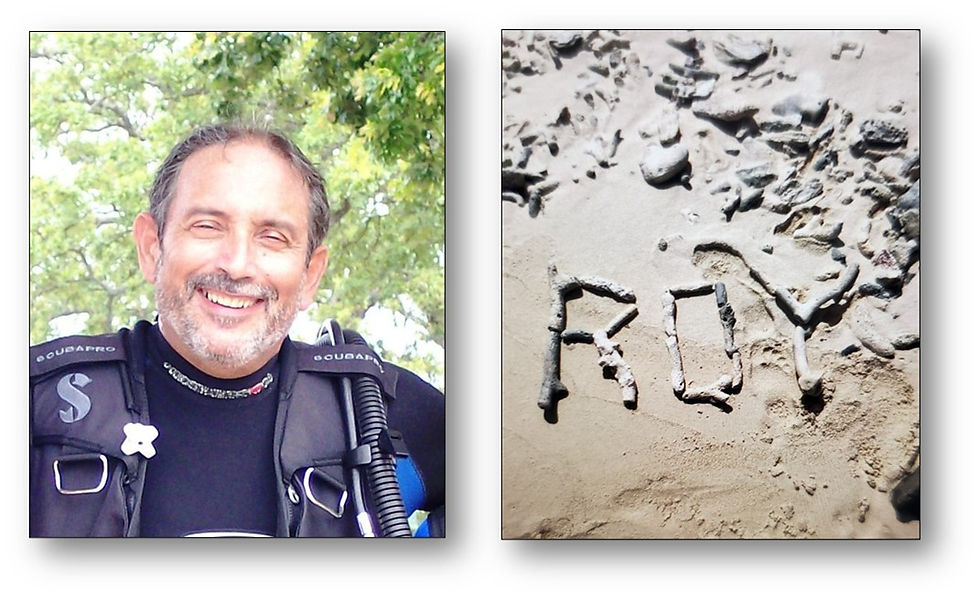
Roy’s passion for diving was something we shared that made our relationship that much stronger and special. It wasn’t easy for me to do it without him. Losing him was like being thrown from a horse. I had to dust myself off and get back on. My first few times back in the water were with dive buddies, friends who knew Roy and me both, and that made it easier in a way; but at the same time, his absence among all of us was an inescapable deficit, a privation of something precious and irreplaceable. For me, there was also the feeling of confidence and security that had grown inside me from the first time I had wriggled into a wetsuit and strapped a scuba tank to my back. He had taught me everything I knew, and I had learned from the best. But would that confidence stay with me, or had it begun to fade when I lost him?
I quickly learned, as has everyone who has loved and lost, that he is always with me, but never more so than when I am beneath the waves. The knowledge and skills he taught me gave me the confidence to dive again with that full assurance.
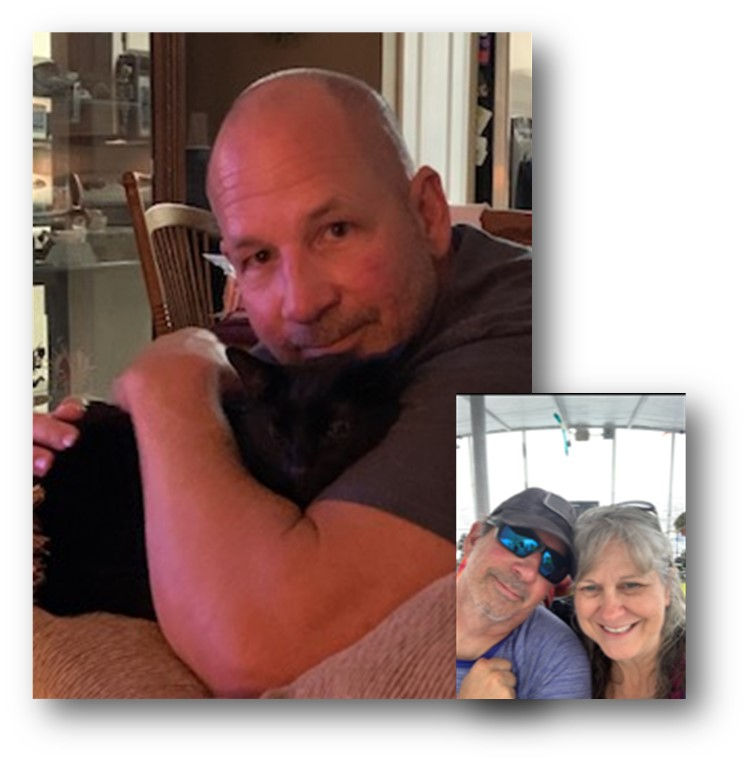
When I met John in May of 2020 and learned that scuba diving had always been an interest of his – well, that and his love of animals, cats included – I knew I had found someone I could share these passions with again. I think it is so important in life to share what you love with someone special, and if he or she loves those things too, it’s like the proverbial icing on the cake.
As the Gulf Stream warms the waters along the Emerald Coast, the urge to submerge grows stronger in me as well. Covid put a major damper on diving last year when a planned and paid-for trip to Little Cayman with my son Keifer was postponed until this year, and then postponed again until 2022, which was just as well, I suppose, considering the Multiple Myeloma diagnosis. I don’t know when I’ll be able to go to the Caribbean again, but I am confident I will. I am hopeful that John's issue can be resolved so that we can dive together again. I am even hopeful that we might be able to dive later in the summer after the stem cell transplant.
I hope.

"Therefore my heart is glad and my tongue rejoices; my body also will rest in hope"
Acts 2:26
References
(1) “Facebook.” n.d. www.facebook.com. Accessed March 27, 2021. https://www.facebook.co m/PanamaCityDiveCenter/photos/3594644957215818.
(2) “Hurricane Michael Noaa - Bing.” n.d. www.bing.com. Accessed March 26, 2021. https://www.bing.com/search?q=hurricane+michael+noaa&qs=AS&pq=hurricane+michael%2c+noaa&sc=3-23&cvid=EC8A879A370849F5A62BFA72C19F2E7D&FORM=QBRE&sp=1.
Not sure if this is Little Cayman or Cozumel. Definitely a drift dive, so most likely Cozumel. Wade Howk can be scene in the bright orange in the background. (Videography by Roy Diaz)
Keifer Turner and Kelly Diaz on the USS Oriskany (Videography by Roy Diaz)
My favorite critter – so intelligent and curious – the octopus.
Roy Diaz doing backward rolls in the Gulf of Mexico near Panama City Beach.
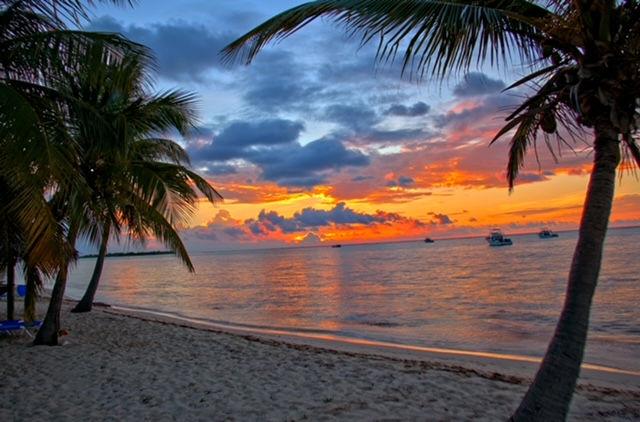

As always, this post so engaging. The description of diving so vivid that I felt as if it was something I was experiencing. I hadn’t realized you lost Roy so quickly. Hope and prayers for your next dive my friend!